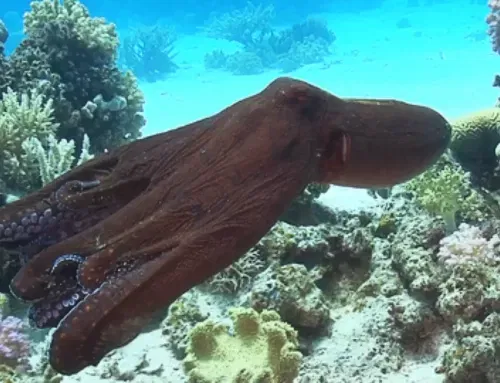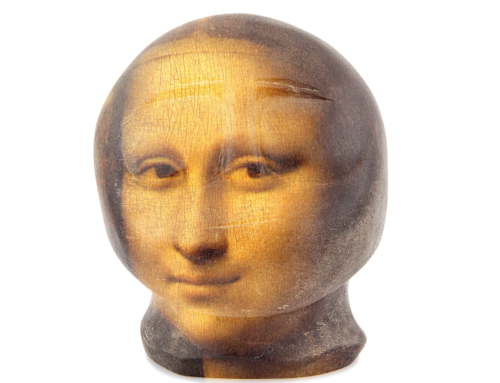My science colleagues asked me how I could switch from research to stories – from science to fiction and back again – as if the two activities were so different that the same person couldn’t do them both. My answer was usually, “I don’t know. I just sit at my desk and start writing and within a few minutes that’s the world I’m in.”
“Do you know the plot or have an end in mind when you write a short story?” were often-asked questions.
Science is a human construct derived from observations and facts shaped to make sense within our perspective. The same can be said of a short story or novel or any work of literature.
I said no, I didn’t have either in mind when I sat down to write. I generally started a story with a fuzzy question or an uncertain image having no idea how it would play out, not unlike how I started a science project. However, unlike science, I believe that I chose to move away from reality when I wrote fiction, perhaps as a foil or rebellion to the exactness of science. Writing fiction freed my mind to roam beyond the requirements of documentation, of referencing predecessors and of qualifying speculation with caveats and explanations. I wanted to invent rules rather than follow them, to dwell in anti-science, and to seek alternative truths. I wanted to search for the diverse characters trapped within me. I wrote a short story about a man who didn’t realize he was dead, and then I wrote a sequel about a man who thought he was dead but wasn’t. I traveled with my pen to a distant planet populated by clouds with human qualities that communicated with words I invented. In another story I questioned whether a physically ugly person could be elected President of the United States. At first I thought that could never happen in our democracy. However, my protagonist – a repulsive, deformed, very smart woman lawyer – campaigned on the platform of barring mirrors so people looked at one another rather than at themselves – an idea that evolved as I was writing the story – and she was elected. What a wonderful surprise!
I regard research and fiction as two forms of expression tugging at each other because the common denominator – me – won’t go away. Fiction and science both tell stories.
“How can that be?” asked a friend. “Science is factual, not a story, and your stories certainly aren’t fact or reality.”
“Really?” I muttered skeptically, thinking of how I could respond to his comment.
“Absolutely,” he continued. “Isn’t DNA a double helix? How’s that a narrative? You can’t call DNA or genes fiction.”
He was right, of course, but that was just one perspective, and fiction didn’t have just one definition. “Science strives for a temporary truth within a narrative medium,” I said, on a quest for what I meant. I sensed that he wasn’t going to agree with me, so I tried to convince myself.
I argued that science is part truth, part narration, like good literature. Why would a scientific theory need to be modified when new information was acquired if our current knowledge, whatever that might be, didn’t comprise some speculation in order to produce a consistent narrative at any one time? Research interpretations are weaved together as best as can be done, but still a story in progress, the full plot not known, some characters not yet introduced, others brought in that may not belong.
Consider DNA – genes – that my friend brought up. Genes, the templates for our embryonic development and the basis for our resemblance to our parents, have been credited for our talents and blamed for our limitations. Genes are at the heart of how we evolved (never mind those who don’t believe in evolution). Our understanding of these holy grails of biology have been modified often. Just a few fairly recent examples. They have gone from being a continuous stretch of nucleotides in DNA, to being a discontinuous, interrupted stretch of nucleotides, from encoding a single protein to encoding a group of related proteins, from having a single function (the early dogma of one gene: one enzyme) to having several functions, from being chemically invariant to being chemically modified with functional consequences, from sometimes including the regulatory elements to other times excluding them, resulting in fuzzy borders. There are more variations, but enough said. The point is clear. Few scientists today would agree with a single definition for a gene. I would not. What’s “true?” How will a gene be defined in the future? How will the gene narrative evolve?
“Okay, it’s an evolving truth,” my friend conceded.
I couldn’t disagree with that. But then I thought of Anna Karenina and impressionist painters and asked, “Aren’t literature and art both objective and subjective – also evolving truths camouflaged as part reality, part imagination?”
My friend continued to look at me disapprovingly, so I went on.
I asked him to venture on an imaginary trip to Egypt where he would take photographs to give a travelogue to his friends. The photographs were the supposedly objective data. But, how did he choose what to photograph or how to interpret the photographs conceptually? Didn’t he have a story in mind that he illustrated with photos? Didn’t he modify that story as different images accumulated? Didn’t his evolving story ultimately become his truth about Egypt that may differ from someone else’s truth? Both tourists and scientists draw incomplete conclusions from incomplete data, filling in along the way. Some science narratives – perhaps most –are insightful, enlightening, or at least partly so, and some probably incorrect. I imagine that a biography or a historical novel also weaves a few facts into a narrative that evolves as additional data emerge and new versions are written, like the evolving truth of genes.
What is known must be accounted for, of course. Genetics cannot be discounted by theology; the Holocaust cannot be ignored by bias or point of view. But many questions always remain, opening opportunities for imaginative narratives. What complex personal and social forces drove historical decisions? What conflicts resided within the characters shown in the photographs of Egypt? Which events depended on serendipity and which were planned? What critical information was lost yet played important roles at the time? One biography of a celebrity or a politician, or one interpretation for an historical event or a scientific phenomenon does not suffice, and each illustrates differences in perspectives and imaginative narratives.
Science is not nature per se, just as a story – even nonfiction – is not reality. That is why Magrit wrote, “Ceci n’est pas une pipe” (“This is not a pipe”), under his famous realistic painting of a pipe. Science is a human construct derived from observations and facts shaped to make sense within our perspective. The same can be said of a short story or novel or any work of literature. Assuming the facts underlying scientific articles or nonfiction are correct, the ensuing hypotheses and narratives result by imaginatively filling in the cracks of ignorance between the facts as an attempt to create a seamless and believable story, a process similar to providing continuity and consistency in writing of any sort. Connecting the dots with imagination shapes narratives and provides direction in science as well as in literature, even if the dots were not placed strategically as in children’s books outlining animals and other images.






Leave A Comment